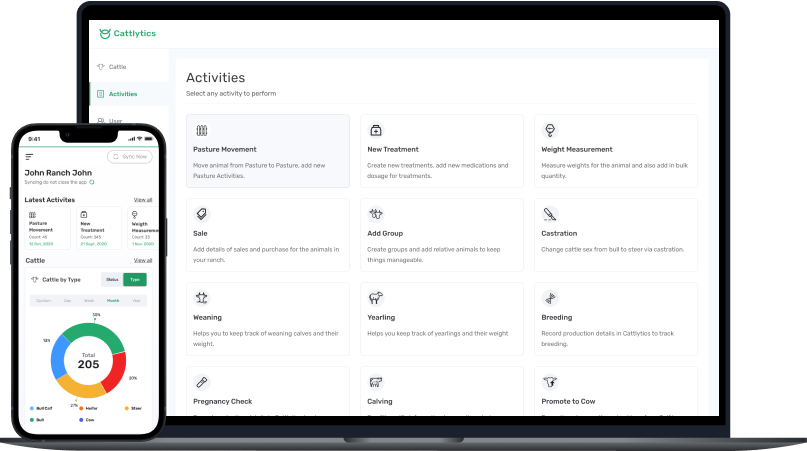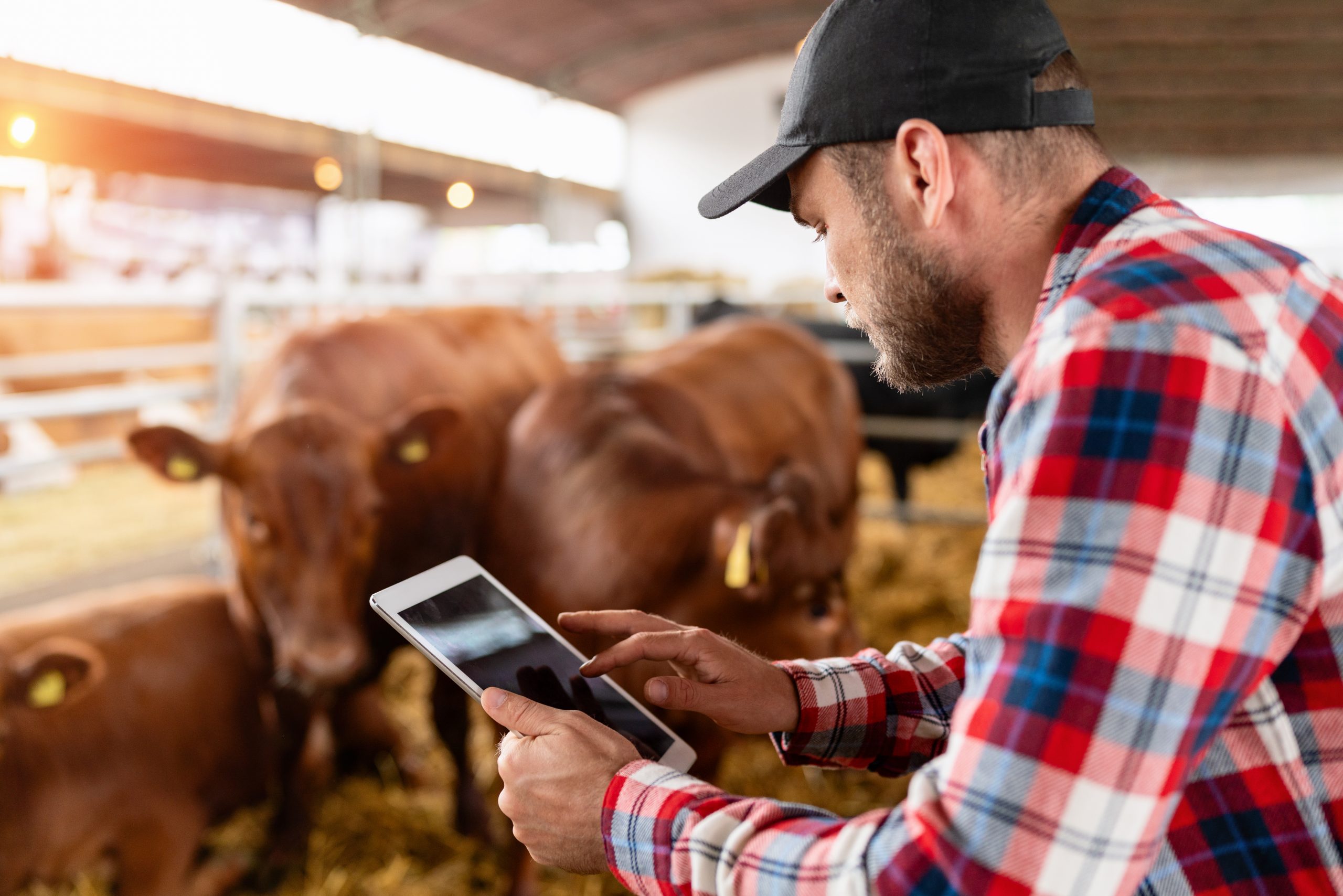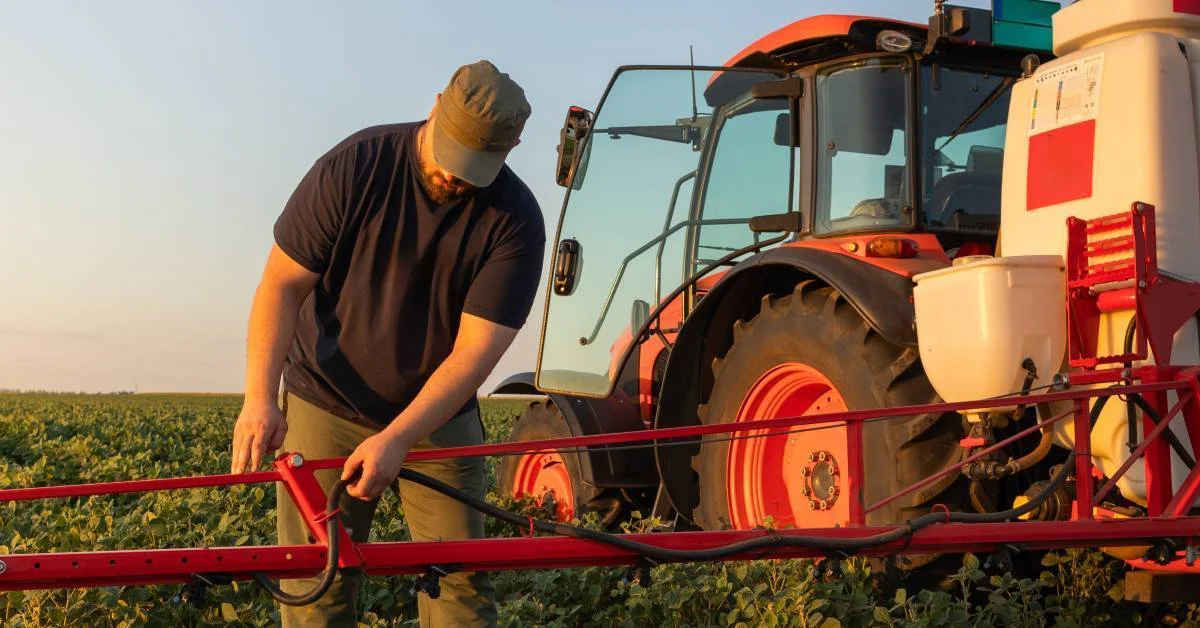Keeping accurate records is one of the most important components of running a successful farming operation. For farmers, it monitors animal health, reproductive cycles, production, and a variety of other metrics. According to the USDA, more than 70% of small and medium cattle businesses use manual record keeping, and while these methods are very common, they can be very time-consuming and prone to human errors.
This article will discuss how digitizing livestock record-keeping can improve not only large-scale farm operations but also help small—and medium-scale livestock farmers run their cattle operations successfully. Join us to discuss strategies for tracking livestock records and how farmers can overcome typical obstacles.
Benefits of Keeping Livestock Records
Livestock record keeping brings many benefits to farmers. Farm management is one of the biggest advantages of keeping records. By recording data on breeding, health, feeding, and production, farmers can gain useful insights about their cattle operations.
The insights then help farmers design the right breeding plans and set suitable prices for auctioned animals. This eventually improves farm management as a whole, increasing output and profitability.
Maintaining records on livestock also helps ensure regulatory compliance. In terms of food safety and animal welfare, commercial cattlemen are required to adhere to strict regulations established by national and international organizations.
When farmers maintain accurate and up-to-date records, they are better able to demonstrate their compliance with these criteria. This lessens their risk of penalty and maintains customer trust in the product’s safety and quality.
Moreover, thorough record-keeping facilitates decision-making and financial management. By keeping track of their revenue and expenses, farmers may efficiently plan and budget for their activities. Accurate records also provide insights into operational costs, enabling farmers to identify areas for cost-cutting and optimization.
Livestock Record Keeping Helps You With:
1. Animal Identification
One significant component of livestock records is individual animal identification. It is done through visual identification, such as photographs, or by identifying features like ear tags or tattoos. By recording identification, farmers have enough information to make individual or whole herd management decisions.
2. Calving Report
After a cow has given birth, she needs to be recorded in the database as having calved. Cow-calf record keeping includes the date of calving, the number of calves born, and other important information such as gender, time, date of birth, etc.
3. Feed Records
It is essential to track the amount of feed given to each animal. This information can be recorded in a feeding diary or a feeding meter.
4. Breeding Records
Keeping track of the breeding cycles of livestock is another important component of record keeping. It can be recorded through a breeding chart or data collected from various fertility indicators, such as urine samples or pregnancy tests. This information can help farmers make informed decisions about cattle breeding.
5. Growth Records
Farmers also need to track the weight and height of their livestock to monitor their growth. This information can be recorded in management systems.
6. Financial Records
Livestock record keeping also includes keeping track of the costs associated with feeding, caring for, and breeding livestock. This information can be recorded in a budget or through a cash register if it’s done manually.
7. Animal History
Recording the history of animals, from births to deaths, is also a key element. This information can be recorded in a livestock database or through a livestock history book.
8. Health and Treatment Records
The health and treatment of livestock need to be tracked, too. This information is used to record the diseased animals and their history, identified diseases, and overall health.
9. Livestock Records for Sale
It’s critical for farmers who operate livestock sales businesses to maintain accurate records of sale information, including the price and quantity of animals sold.
Challenges in Manual Record-Keeping
For farmers, maintaining accurate and up-to-date livestock records may be challenging, particularly when done manually on paper. Here are a few of the main challenges:
Data Collection and Management: One of the biggest challenges of maintaining livestock records is data collection. Farmers must ensure that they have accurate records of each animal in their herd and carefully monitor them. Completing this task might take some time, and it could be difficult to recall everything. Furthermore, human error is likely to occur when data is manually entered.
Integration of Multiple Data Sources: If information from several sources cannot be integrated into a single system, tracking livestock records may become difficult. A single system should include data from several sources, including a diet journal, a breeding chart, and fertility indicator data.
Time-Consuming: For farmers, manually entering and organizing animal data might take a lot of time. Time and effort that may be used for other crucial activities are wasted on this.
Storage and Accessibility: Farmers may find it challenging to manage a large number of paper-based records. Furthermore, these documents may not be readily transferred or accessible when needed.
Going Digital with Livestock Record Keeping
There are a number of solutions for the challenges that manual record keeping creates for farmers and ranchers. Some of the most common solutions include:
- Development of an Integrated System:
By using digital platforms for record keeping, farmers can have a system that integrates data from various sources. The centralized data might include information related to cattle diet, breeding charts, and fertility indicators. Having this integrated system can allow farmers to get a comprehensive overview of their livestock’s health and performance.
- Use of Technology:
Technology helps farmers maintain efficient records. For instance, automated feeding meters enable precise tracking of feed consumption per animal, along with timestamped records. This ensures data accuracy and tackles the main challenge of manual data entry, which is human error.
- Use of Livestock Management Software:
Investing in livestock management software provides farmers with a database that can be a valuable tool for tracking livestock records. The software can offer accessibility across multiple devices, allowing farmers to update and retrieve records on the go. Moreover, it enables historical data tracking, facilitating informed decision-making and optimizing herd management strategies.
- Cloud-Based Solutions:
Transitioning to cloud-based solutions eliminates the hassle of physical storage and enhances data accessibility. Farmers can store vast amounts of livestock records in the cloud, eliminating the risk of loss or damage associated with traditional paper-based methods.
Furthermore, cloud-based systems provide real-time synchronization, guaranteeing that data is up to date on all connected devices.
- Use of Data Analytics:
Digital record-keeping provides analytical tools that help farmers derive actionable insights. Farmers can identify patterns, optimize resource allocation, and implement targeted interventions to improve livestock health and productivity by analyzing historical data trends.
Manage Cattle and Livestock Record Keeping with Cattlytics

Cattlytics is a cattle management software that offers an innovative solution for efficiently managing cattle and livestock records. With over 6,000 farmers globally relying on its intuitive web and mobile application, Cattlytics has become a trusted ally in overseeing ranch management operations.
The software’s comprehensive features cover all aspects of livestock management. From individual and group management to breeding and production tracking, Cattlytics ensures that every detail is recorded and accessible from a single platform.
Its event-driven dashboard allows users to monitor key metrics and activities, while offline data collection ensures seamless operation even in remote areas.
Features like multilingual support and customizable user preferences enhance usability for diverse agricultural settings. With flexible pricing plans catering to farms of all sizes, Cattlytics ensures accessibility and affordability for every user.
Cattlytics is more than just a cattle management tool; it’s a comprehensive solution designed by farmers for farmers. Through the automation of record-keeping procedures and the provision of insightful data, Cattlytics helps farmers maximize their productivity and succeed in managing their animals.
Conclusion
Keeping accurate and up-to-date livestock records is important for efficient ranch management. As farming practices become increasingly complex, traditional methods become redundant, and there’s a need to switch towards new solutions that are not only efficient but also help farmers improve the productivity of their livestock operations.
In the blog, we have explored several challenges manual record-keeping poses. Hence, the need to adopt digital solutions such as Cattlytics to streamline the process and ensure data accuracy is becoming evident. Farmers can make informed decisions and optimize their operations using these digital tools for improved profitability and sustainability.
FAQs
What is the Record Keeping of Animals?
Record keeping involves maintaining data on individual animals’ health, breeding, and other relevant information that helps farmers make informed decisions about their livestock.
How Do You Keep Track of Livestock?
Livestock can be tracked using various methods, including:
- Ear Tagging
- RFID (Radio-Frequency Identification)
- Visual Identification
- Record Keeping Software
Why Do We Need to Keep Track of Our Livestock?
Tracking livestock helps in timely vaccinations and disease control. Farmers may use it to choose the best breeding pairings, which, over time, increases the productivity and genetics of the herd. By keeping an eye on the performance and growth rate of their animals, farmers may also improve feeding practices.
What is an Example of Livestock Monitoring?
One example of livestock monitoring is using GPS-enabled tracking collars on cattle to follow their movements and feeding patterns across pastures. Analyzing this data can help avoid overgrazing and maximize pasture management.








